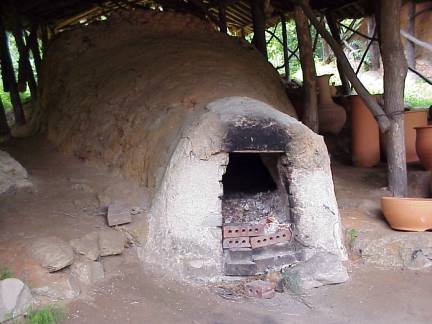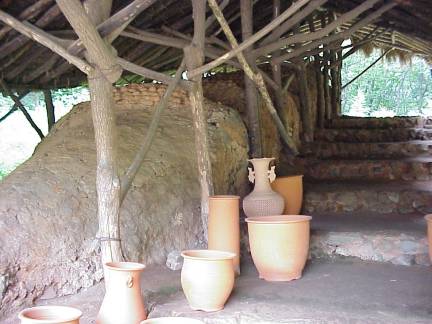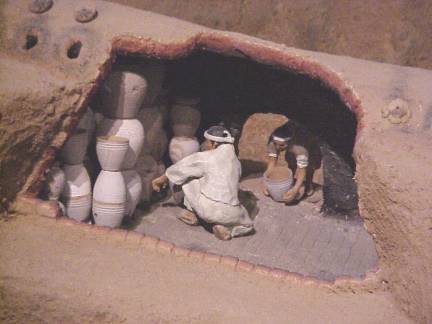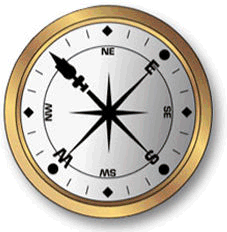Celadon
glazes are well known amount Chinese, Korean
and Japanese stoneware makers creating beautifully decorated pottery in various
shades of green, olive, blue, and gray. Different colours can be produced by
addition a high proportion of
iron applied to the body before
glazing
which interacts with the glaze during the firing and colours the item. In the Eastern world
celadon were prized long before the were known to the West.
Popular because of its beauty,
people believing in superstition count on celadon dish would break or change colour if poisoned food were put into
it. To the Chinese, celadon resembled jade.
|
|
In China, the earliest
celadon was produced in the
Han dynasty (206 BC–AD 220),
most of the items glaze is olive or brownish green.
The first to reach Europe in the 14th
century were the celadons of the Sung dynasty,
produced in the kilns of Lung-ch'üan. Still exisint items include large dishes, bowls, and large
vases with a transparent green colour glaze, superb in quality with a well-marked crackle.
|
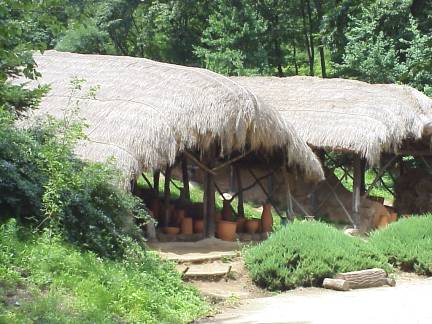
Kiln (Korean Folk Village Suwon)
|
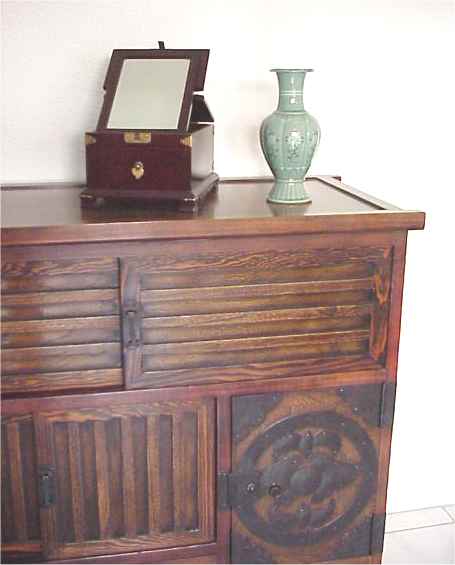 | Celadon vase are appreciated as
gift items looking very beautiful on top of a traditional Korean
medicine chest or as displayed here on a Japanese Tansu. To present an Ikebana a celadon vase is most
suitable to display the art of
Japanese flower arrangement.
A
Mirror box (Vanity) is display as well.
Dressing tables were often used in old Japan. They
must have had an important meaning in the life of women.
They were used to store
combs, hairpins, powder and valuable oils. The mirror can be folded and
disappears entirely into the box.
|

